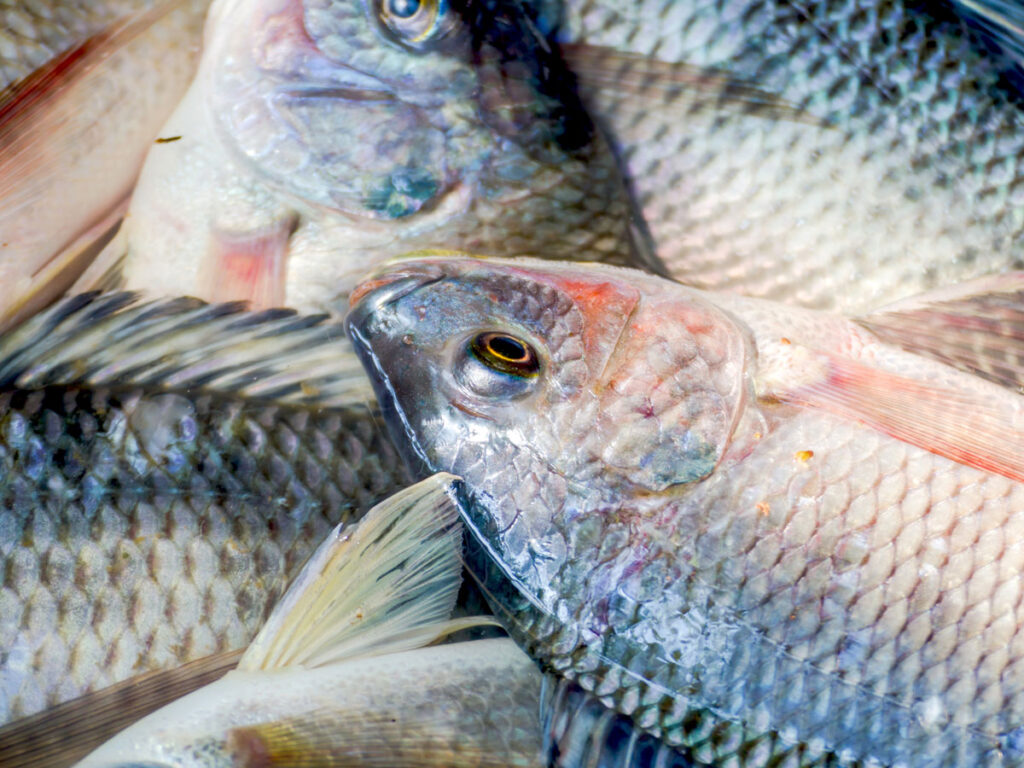
Last updated: 10 May, 2025 @ 12:11
We used to hate being dragged around a supermarket.
The cramped, busy aisles seemed endless – much like the lengthy list of sweet treats we weren’t ever going to be allowed to have. However, fast forward 30 or so years, and propelled by a passion for seafood, that has all changed.
That change has been dramatic, so much so, we think we’ve developed a new hobby – a fascination for overseas supermarkets.
Whilst the tourists gleefully set off on their six hour coach trip to some random remote attraction, we’re busy seeking out the nearest supermarket in search of one thing – the fish counter.
It’s become a genuine fascination – perhaps fuelled by the fact that most supermarkets in the UK are culling their fish counters. That’s a shame, because there is treasure to be found – and enjoyed.
Some of the best surf clams we’ve ever eaten came from a Spar supermarket in Villajoyosa in Spain, whilst a fully-stocked fish counter in northern France is still a sight to behold.
The Bangkok supermarket experience
Of course, when recently in Bangkok, Thailand, a visit to the local supermarket was high up the list of things to do – only coming second to finding some ointment for a rapidly developing heat rash.
The supermarket we found was located in Hua Mak, in the sub-district of Bang Kapi, Bangkok.
Hua Mak is an unfashionable sort of place, peaceful and almost calm – its little canal-like waterways bringing a slight sense of relief from the ensuing chaos of the other parts of the city.
Going by the name Maxvalu – a Japanese-owned chain operating throughout Thailand – the 24/7 supermarket, according to its website, provides customers with ‘daily necessities by selecting products in terms of quality, price and type’.
Incessant ditty
The fish counter, complying to the unwritten global law that makes it illegal for it to be located anywhere other than at the back of a store, was, well, at the back of the store.
It was a little late in the day, the supermarket was still busy with customers, but the fishmonger had vanished, exhausted by the day’s work or driven insane by the annoying, incessant ditty playing on loop over the supermarket’s PA system.
We’ve tried finding a clip on YouTube which includes the constant, sickly sweet song that penetrates not just your eardrum, but also your brain and very soul. Fortunately for you, we failed in that quest.
Late in the day
Surprisingly, the selection of species available wasn’t vast. Perhaps this means your ordinary Thai shopper sticks to the city’s fishmarkets when buying their fish, preferring freshness over convenience, or maybe it was the fact that it was a little late in the day.
Four shallow bins for iced wet fished, situated around a central console-type constriction, were all empty. However, a sign above the bins had the names of two species: tilapia and Asian seabass.
At this point, the penny dropped that the fish labelled ‘white snapper’ and ‘red snapper’ seen in Railay, some 500 miles to the south, were likely to be farmed and not the species they claimed to be – you can read more about that in our blog post Unveiling the Seafood Secrets of Railay, Thailand.
Anyway, we’re not here to talk about that, as despite the iced wet fish being long-since cleared away, there were some species left in a chiller, wrapped in clingfilm and neatly packaged up.
Shishamo
There were plenty of packets of a small fish called shishamo – which looked like an elongated sprat and was sold by the dozen.
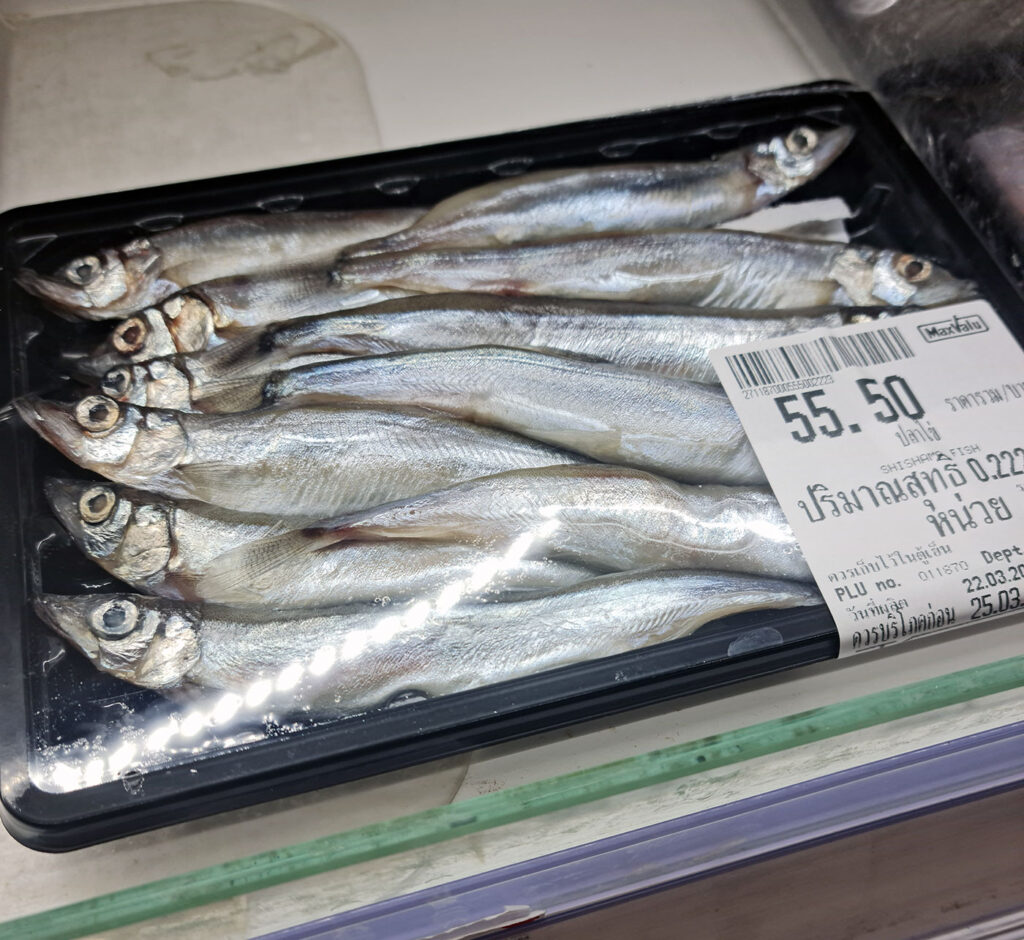
Shishamo is a fish native to Japan, the name of which translates as the willow leaf fish owing to its appearance.
This slight, silvery fish is actually a saltwater smelt, and is best grilled or fried and served whole.
Growing to around 15cm, shishamo is said to be very good with alcohol – but then we’ve yet to find a fish which isn’t.
The ‘sand white fish’
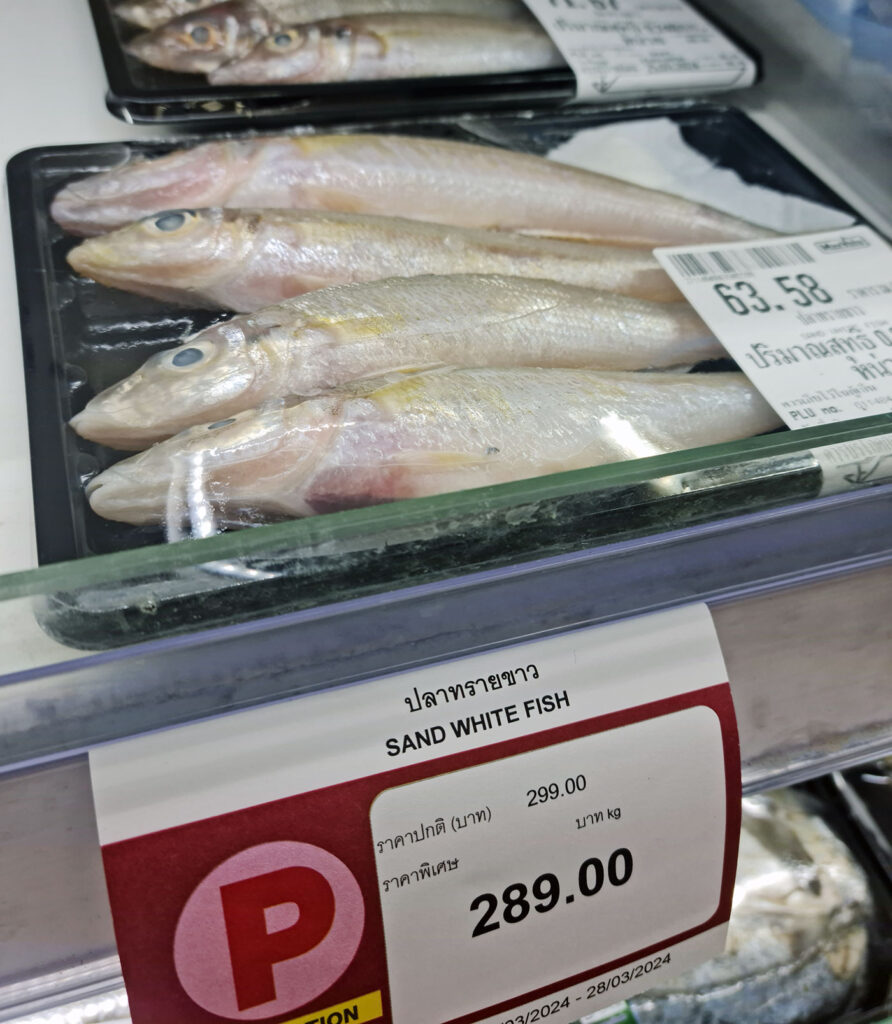
Another fish in the chiller that is almost definitely good with a cold beer or three was labelled as a ‘sand white fish’.
Sold in packs of four, this pretty fish, shaped much like a juvenile pollack, is, we believe, a sand whiting, a member of the sillaginidae family.
Widely distributed across much of the Indo-Pacific, the sand whiting is a highly popular fish in the Philippines, Western Australia – and Thailand.
Its small size makes it ideal for deep frying, with turmeric or garlic, and eating whole.
The ‘yellow-stripe scad’
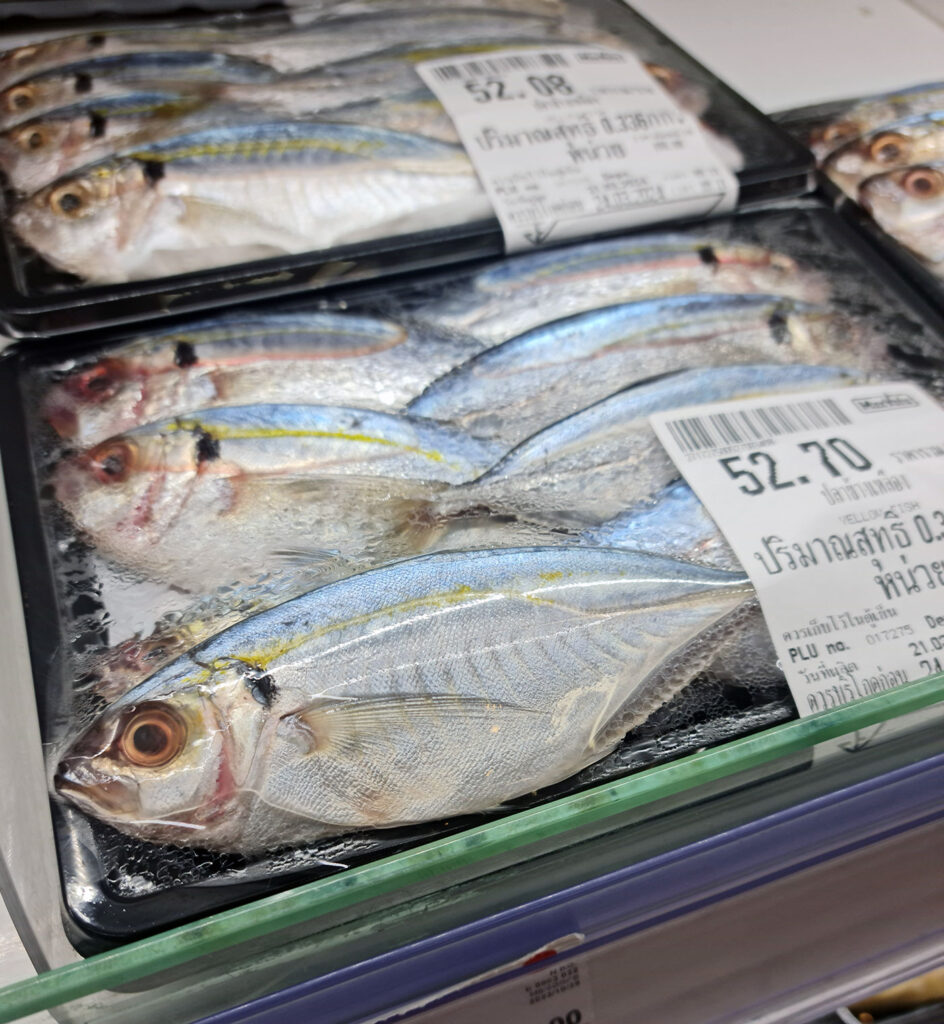
The only other species of fish left in the chiller in any number was one rather unimaginatively named as ‘yellow fish’.
Admittedly, it did have a thin yellow streak running the length of its body, from above the eye down to its tail – but it was still a rather disappointing name for a fish that was actually reasonably attractive, and streak aside, not particularly yellow.
Now, this fish isn’t of Japanese origin – and it’s actually called a ‘yellow-stripe scad’ – a species widely distributed throughout the Indo-West Pacific region.
A versatile fish, it’s apparently best deep fried or curried.
A new supermarket experience
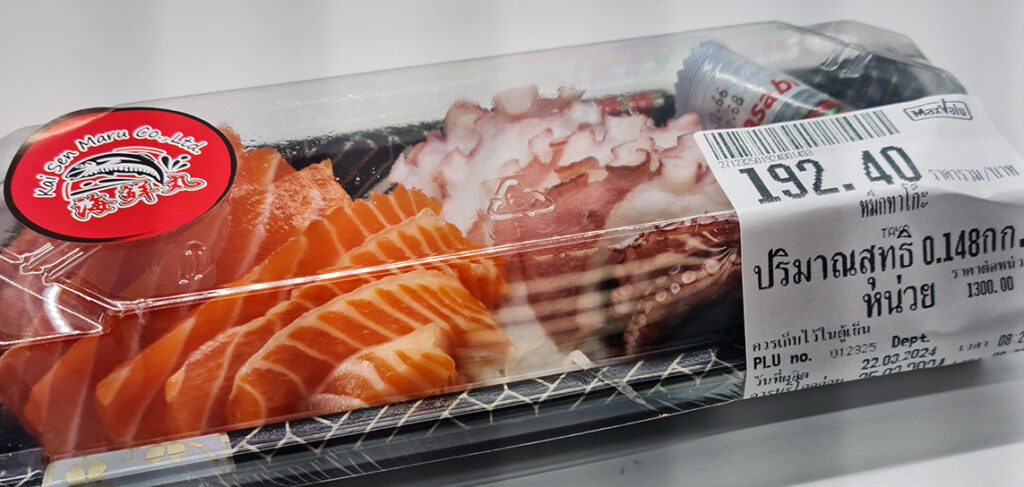
The final item to catch my eye was a small tray of sashimi, featuring salmon and octopus tentacles – which at £4 (April 2024) seemed a little steep.
We refrained from buying the sashimi, and indeed any of the fish.
Instead, we left with a new supermarket experience under my belt, a few cold Changs and a packet of baked cuttlefish crisps – a unique experience that you can read all about here.
Further reading: Fish Face Seafood Blog in Thailand
Read more about the Fish Face Seafood Blog trip to Thailand, including our visit to Bangkok’s Chinatown district, and our must-read post: Unveiling the Seafood Secrets of Railay, Thailand.